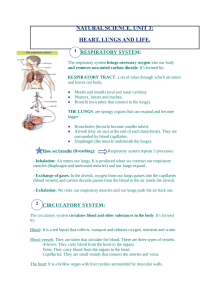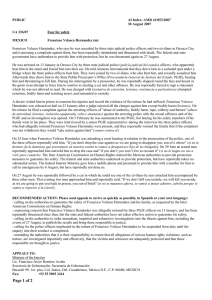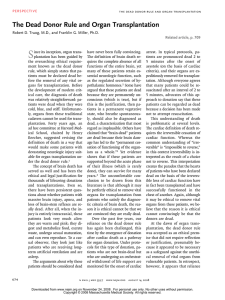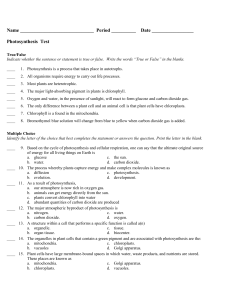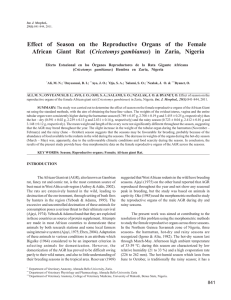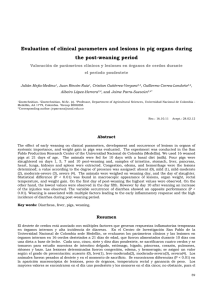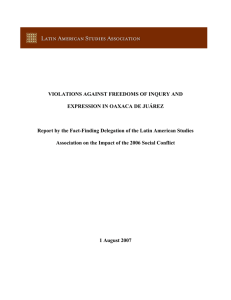Instituto de Órganos Históricos de Oaxaca, A.C.
Anuncio
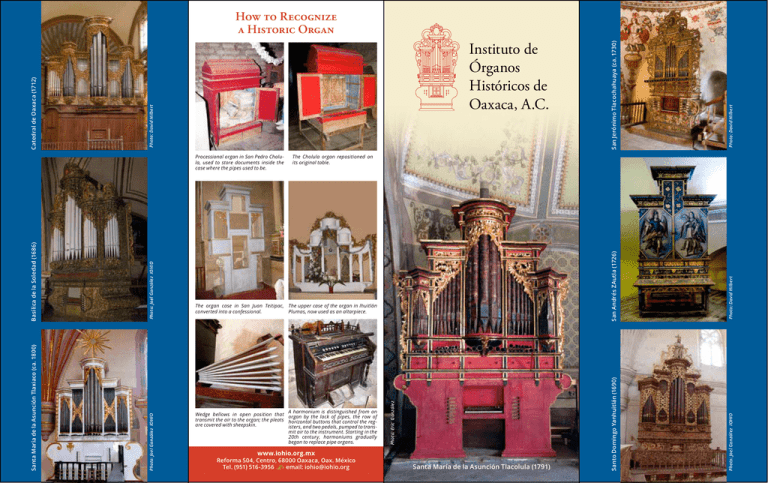
A harmonium is distinguished from an Wedge bellows in open position that organ by the lack of pipes, the row of transmit the air to the organ; the pleats horizontal buttons that control the regare covered with sheepskin. isters, and two pedals, pumped to transmit air to the instrument. Starting in the 20th century, harmoniums gradually began to replace pipe organs. www.iohio.org.mx Reforma 504, Centro, 68000 Oaxaca, Oax. México Tel. (951) 516-3956 email: iohio@iohio.org Santa María de la Asunción Tlacolula (1791) Photo: David Hilbert Photo: David Hilbert Photo: Joel González IOHIO The organ case in San Juan Teitipac, The upper case of the organ in Ihuitlán converted into a confessional. Plumas, now used as an altarpiece. Santo Domingo Yanhuitlán (1690) San Andrés ZAutla (1726) The Cholula organ repositioned on its original table. Photo: Eric González Photo: Joel González IOHIO Photo: Joel González IOHIO Santa María de la Asunción Tlaxiaco (ca. 1800) Basílica de la Soledad (1686) Processional organ in San Pedro Cholula, used to store documents inside the case where the pipes used to be. San Jerónimo Tlacochahuaya (ca. 1730) Instituto de Órganos Históricos de Oaxaca, A.C. Photo: David Hilbert Catedral de Oaxaca (1712) How to Recognize a Historic Organ The Historic Organs of Oaxaca, Mexico Special Characteristics of the Oaxacan Organs Instituto de Órganos Históricos de Oaxaca a.c. One of Oaxaca’s lesser-known cultural treasures is its outstanding collection of baroque pipe organs. Seventy-two organs built between 1686 and 1891 remain today as evidence of a glorious musical past when Oaxaca was the third most important center of music in New Spain, after Mexico City and Puebla. Beginning in the 1990s, a growing awareness and appreciation of these marvelous instruments has led to conservation and restoration projects, as well as increasing use of the organs through masses and church celebrations, concerts, and festivals throughout the state. Although many hundreds of organs have existed in Oaxaca since 1544 (the earliest archival reference to an organ), over the course of time most of them have been lost due to normal deterioration, natural disasters, neglect, and/or willful destruction when they ceased to function. Nine organs have been restored, reconstructed, or repaired and are now playable, while the remaining sixty-three instruments exist in varying states of conservation. Some are represented only by an empty exterior case or some interior parts, while others are completely intact and may be restored someday. The Oaxacan organs preserve elements of Iberian baroque organ design—one 45-note keyboard with a short octave (until the mid-19th century), no pedals, and meantone temperament—at the same time that they developed idiosyncratic exterior features—a profile with rounded protuberances on the sides (“hips”) and the unusually lavish case and pipe decoration of many 18th-century instruments. Founded in 2000 with the support of the Alfredo Harp Helú Foundation, el Instituto de Órganos Históricos de Oaxaca or Institute of Oaxacan Historic Organs (IOHIO, pronounced YOYO) strives to raise awareness about the organs by means of the following activities: But despite their condition, the sample of seventy-two organs is enough to reveal a fascinating panorama of construction techniques and musical characteristics spanning over two hundred years. Furthermore, it is almost certain that there are still more organs in Oaxacan communities waiting to be discovered, and it is urgent to register them before they disappear. Most of the organs are still in relatively authentic condition and have been little altered or modernized over the course of time. This is in large part related to the geographical isolation and poverty of many of their communities, the abandonment and neglect of the organs, and a conservative tradition of organ building in Oaxaca which was resistant to change. Around 40% of the Oaxacan organs date from the 18th century or earlier, whereas most of the organs in other states of Mexico date from the 19th century. Most of the organs were built in the state of Oaxaca, with the exception of a few later examples originating in Puebla. Although projects were often supervised by non-Oaxacan maestros, the actual construction and decoration of the organs would have been carried out by local artisans, manifesting the same talent for fine craftsmanship which still flourishes in the state today. All the Oaxacan organs are still located in churches; not one of them is in a museum. Assure that the restored instruments are played and maintained and that the unrestored instruments are protected, conserved, and documented Offer musical and technical training at the local level Promote the organs through concerts, festivals, publications, conferences, and recordings Increase knowledge about the organs through archive and community research MISSION: The IOHIO is committed to protect, conserve, document, and promote the historic pipe organs in the state of Oaxaca, Mexico; to raise consciousness about their importance as part of the national and international cultural heritage; and to reintegrate the restored instruments into the present-day life of their communities. VISIÓN: We believe that the historic pipe organs merit respect and support. These multifaceted instruments still delight us with their rich sound, their precise mechanism, and their elegant appearance. In addition, they represent a link to the history of their communities and remind us of the commitment of the ancestors of present-day Oaxacans who financed their construction. Restored or Reconstructed Organs in Oaxaca San Jerónimo Tlacochahuaya (restored 1991) San Andrés Zautla (restored 1996) Oaxaca Cathedral (reconstructed 1997) Santa María de la Natividad Tamazulapan (reconstructed 1997) Santo Domingo Yanhuitlán (reconstructed 1998) La Basílica de la Soledad (restored 2000) Santa María de la Asunción Tlaxiaco (restored 2002) San Pedro Zapotitlan Lagunas (repaired 2003) Santa María de la Asunción Tlacolula (restored 2014) Directed by keyboardist Cicely Winter, the IOHIO is a non-profit organization (Asociación Civil or A.C.) that functions in collaboration with the Instituto Nacional de Antropología e Historia (INAH, the Mexican institution which oversees the protection of the national heritage), officials of the towns with organs, ecclesiastical authorities, directors and researchers in Oaxacan archives, cultural institutions of the state government, organists, musicians and scholars in Mexico and abroad, and a Board of Advisors consisting of thirty experts from nine countries. Instituto de Órganos Históricos de Oaxaca, A.C.

